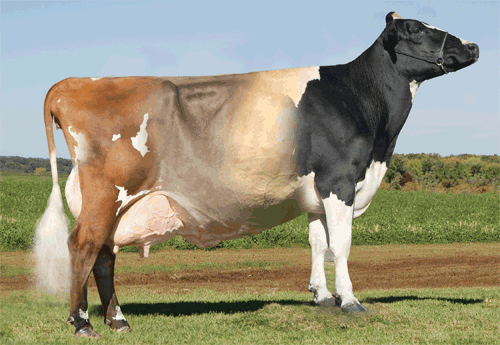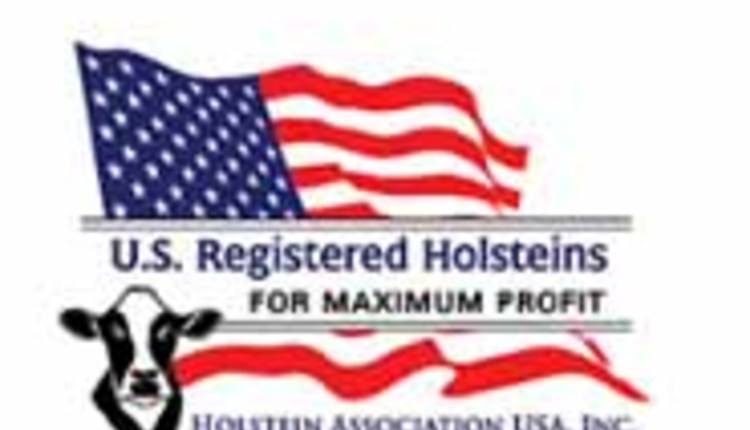The authors are with the Animal Improvement Programs Laboratory of the Agricultural Research Service in Beltsville, Md.

by Rex L. Powell and H. Duane Norman
The authors are with the Animal Improvement Programs Laboratory of the Agricultural Research Service in Beltsville, Md.
Historically, the percentages for different breeds were determined by the breed reported for a cow. She was either called a Holstein, Jersey, or some other breed. That took place even though the cow may have been 50 percent of one breed and 25 percent of each of two other breeds.
We now have better reporting and improved computing power. The national data base at USDA includes the percentage breed background for each animal. Each cow's pedigree has been examined from as far back as we can go (1960 for many cows).
We will report our findings in this article with a question-and-answer format.
Are the breed percentages different?
For purebred animals, having only one breed appearing in their pedigree, there's no difference. And that's most of the population. Even the animals not in herdbooks are mainly of single breeds. The difference arises from cows that have more than one breed in their background.
Holstein and Red and White are considered as a single breed for evaluation purposes and have contributed about 90 percent of the genes for a number of years. Proportion of genes from Jerseys has climbed just under 2 percent (5.6 to 7.6 percent) in the past 10 years while Ayrshire, Brown Swiss, and Guernsey genes have all dropped. Milking Shorthorn and nontraditional breeds have stayed about the same. There has been an increase in genes from unknown or unidentified sources. Hopefully, that is a result of more data included in the program and will shrink over time.
Why now consider the breed composition?
This was a necessary step in the all-breed evaluation system. In order to account for heterosis, it is necessary to know the breed background. Heterosis (basically getting an added response due to different breed composition for sire and dam) doesn't exist for purebred animals (though the benefit from outcrossing has the same basis as from crossbreeding).
What is the extent of crossbreeding?
Relative to meat animal populations, dairy crossbreeding is practiced much less. However, there has been more interest, and that interest has grown in recent years. Crossbreds accounted for 0.6 percent in birth year 1990, 0.8 percent in 1995, 1.3 percent in 2000, 3.3 percent in 2005, and 4.7 percent in 2007. This trend could be due to improved record keeping that captures data on crossbreds that would have been lost in earlier years.
In the long term, the percent of crossbreds could be misleading as we could imagine a high portion of the population being technically crossbred (another breed represented many generations ago, making it crossbred) but these cows being essentially purebreds. Certainly we would have a higher portion labeled crossbreds now if our pedigree information went back another 50 years.
Read the entire article in the February 10, 2011 issue of Hoard's Dairyman, on page 83

by Rex L. Powell and H. Duane Norman
The authors are with the Animal Improvement Programs Laboratory of the Agricultural Research Service in Beltsville, Md.
Historically, the percentages for different breeds were determined by the breed reported for a cow. She was either called a Holstein, Jersey, or some other breed. That took place even though the cow may have been 50 percent of one breed and 25 percent of each of two other breeds.
We now have better reporting and improved computing power. The national data base at USDA includes the percentage breed background for each animal. Each cow's pedigree has been examined from as far back as we can go (1960 for many cows).
We will report our findings in this article with a question-and-answer format.
Are the breed percentages different?
For purebred animals, having only one breed appearing in their pedigree, there's no difference. And that's most of the population. Even the animals not in herdbooks are mainly of single breeds. The difference arises from cows that have more than one breed in their background.
Holstein and Red and White are considered as a single breed for evaluation purposes and have contributed about 90 percent of the genes for a number of years. Proportion of genes from Jerseys has climbed just under 2 percent (5.6 to 7.6 percent) in the past 10 years while Ayrshire, Brown Swiss, and Guernsey genes have all dropped. Milking Shorthorn and nontraditional breeds have stayed about the same. There has been an increase in genes from unknown or unidentified sources. Hopefully, that is a result of more data included in the program and will shrink over time.
Why now consider the breed composition?
This was a necessary step in the all-breed evaluation system. In order to account for heterosis, it is necessary to know the breed background. Heterosis (basically getting an added response due to different breed composition for sire and dam) doesn't exist for purebred animals (though the benefit from outcrossing has the same basis as from crossbreeding).
What is the extent of crossbreeding?
Relative to meat animal populations, dairy crossbreeding is practiced much less. However, there has been more interest, and that interest has grown in recent years. Crossbreds accounted for 0.6 percent in birth year 1990, 0.8 percent in 1995, 1.3 percent in 2000, 3.3 percent in 2005, and 4.7 percent in 2007. This trend could be due to improved record keeping that captures data on crossbreds that would have been lost in earlier years.
In the long term, the percent of crossbreds could be misleading as we could imagine a high portion of the population being technically crossbred (another breed represented many generations ago, making it crossbred) but these cows being essentially purebreds. Certainly we would have a higher portion labeled crossbreds now if our pedigree information went back another 50 years.
Read the entire article in the February 10, 2011 issue of Hoard's Dairyman, on page 83








